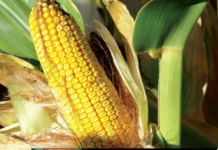Contact: Marsha Boswell, [email protected]
For audio version, visit kswheat.com.
MANHATTAN, Kan. – Wheat farmers, grain trade representatives and state and national wheat organization staff members got to walk a figurative mile in the shoes of their end-use customers this month during a flour milling short course at the IGP Institute at Kansas State University.
The IGP Institute organizes this course annually as a deep dive into milling and baking processes. This year’s course, conducted December 11-13, 2023, was designed to give wheat growers and industry personnel training in the basic principles of flour milling and a greater understanding of the relationship between wheat quality and flour performance. Eighteen participants representing seven states participated in this year’s course. They got a firsthand look at the ins and outs of what it takes to take wheat from the kernel to the loaf or other wheat food product.
Chris Tanner, vice president of the Kansas Association of Wheat Growers and a farmer from Norton, Eric Sperber, CEO of Cornerstone Ag in Colby, who serves as an industry representative on the KAWG board, and Kansas Wheat Vice President of Communications Marsha Boswell participated in the short course. Farmers from Idaho, Oregon, North Dakota, Oklahoma and Montana, representatives from national wheat organizations, as well as wheat breeders from South Dakota also attended the course, providing each other with a unique viewpoint of the quality needs throughout the wheat and flour supply chain.
“From a grower’s perspective, wheat is wheat. I took it for granted,” Tanner said. “I thought you just ground it into flour and made bread. That was definitely oversimplified. Most people have a mindset that you run it through the mill once, but I didn’t know it went through so many breaks.”
In addition to classroom lectures, the course included hands-on practical training in K-State’s milling and baking laboratories. The group members learned about the milling differences in the six classes of wheat, principles of wheat cleaning and conditioning, an explanation of major milling equipment and the process of wheat and flour blending, as well as the impact of grade, wheat quality characteristics and mill performance on flour extraction. At the milling laboratory in Shellenberger Hall on the K-State campus, the participants divided into groups to mill all six classes of U.S. wheat.
“There’s an intricate process to get every last piece of flour extracted to get a decent margin,” Tanner said. “The flour miller’s margin is thin, like the farmer’s. The things we do on the farm impact the mill’s bottom line.
“There are people every step along the way that care about getting the best product to the consumer. Everyone along the industry chain is trying to bring the highest quality product to market,” he said.
At the Hal Ross Flour Mill, attendees walked through the machinations and process of an actual flour mill and learned about the various products a mill can produce. They milled both hard red winter and soft white wheat in the mill.
“Having been in the wheat trading business for 30 years, I found the course to be enlightening,” Sperber said. “The milling side of the course really resonated with me. It was helpful to see the dynamics of the milling process. Milling wheat into flour is much more complex than just grinding the seed. My anticipation was that you ran the wheat through the mill once and you had bran, germ and flour. I had no concept of the streams it went through to maximize the endosperm.”
In the baking lab, attendees also learned about the different flour and dough testing methods that end-use customers use to evaluate the quality and functionality of each load of wheat. They also participated in baking tests to see the variation in products like bread, cakes and cookies when using different classes of wheat.
“The classroom instruction on the baking and flour qualities was interesting,” said Sperber. “I didn’t know about the care of trying to not damage the starch from the baking side of it.”
Tanner agreed, saying, “When you buy a bag of flour, you think it’s flour. I learned about the different flours made from the classes of wheat. In the baking lab, I didn’t get the flour I needed to make a loaf of bread, so instead I made a brick.”
Ultimately, the short course pulls back the curtain on the technical aspects of how differences in wheat class and qualities impact the final product on a consumer’s plate. The farmers and staff who attended the course left with valuable knowledge of how to better meet the needs of their customers.
Learn more about the technical, research-based training offered by K-State through the IGP Institute at grains.k-state.edu/igp/.
###
Written by Julia Debes for Kansas Wheat




